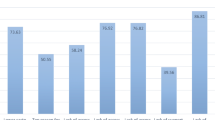Abstract
Feminist scholarship has shown time and again that women’s labour influences rural economic setup and livelihood. The present study focuses on the precarity of women handloom weavers at Sualkuchi, Assam. This paper identifies the workplace and household challenges faced by women weavers and highlights their struggle for livelihood with the help of a qualitative approach. The study finds that economic necessity, poverty, lack of education and large family size are major reasons that compel women to join the handloom industry for livelihood. Women weavers are exposed to occupational health risks, which led them to a vicious debt cycle. Besides, unhealthy work environment, low wages and unpaid household work make women weavers more vulnerable. In addition, socio-economic constraints prevent women weavers from holding decision-making roles and place them at the bottom of the hierarchy compared to their male counterparts. These challenges must be addressed to empower the women weavers.
Access this chapter
Tax calculation will be finalised at checkout
Purchases are for personal use only
Similar content being viewed by others
References
Banerjee, P., & Gangopadhyay, S. (2003). A study on the prevalence of upper extremity repetitive strain injuries among the handloom weavers of West Bengal. Journal of human ergology (Tokyo), 32(1):17–22. https://pubmed.ncbi.nlm.nih.gov/15176126/. (PMID: 15176126).
Basole, A. (2012). Knowledge, gender, and production relations in India’s informal economy. ScholarWorks@UMass Amherst. Retrieved June 6, 2018, from https://scholarworks.umass.edu/cgi/viewcontent.cgi?article=1530&context=open_access_dissertations.
Bhattacharjee, M. (2009). Gender in silk industry: A study of women silk weavers in Sualkuchi, Assam. Shodhganga: a reservoir of Indian theses @ Inflibnet. Retrieved June 7, 2018, from http://shodhganga.inflibnet.ac.in/handle/10603/62033.
Bhuyan, Z. (2013). An urban-spatial analysis of the women in the informal sectors of greater Guwahati city of Assam, India. Space and Culture, India, 1(1), 69–82. https://doi.org/10.20896/saci.v1i1.21.
Bidisha, M., & Purusottam, N. (2013). Gender inequality in north east India. PCC Journal of Economics and Commerce, 1–13.
Cohen, G. A. (1979). The labor theory of value and the concept of exploitation. Philosophy & Public Affairs, 8(4), 338–360.
Directorate of Census Operations Assam. (2011). District census handbook, Kamrup. Directorate of Census Operations Assam.
District Census Handbook, Kamrup, Series 19, Part—XII-B. (2011). Directorate of census operations, Assam. Office of the Registrar General & Census Commissioner, India. Retrieved February 7, 2018, from http://www.censusindia.gov.in/2011census/dchb/1822_PART_B_DCHB_KAMRUP.pdf.
Eapen, M. (2001). Women in informal sector in Kerala: Need for re-examination. Economic and Political Weekly, 36(26), 2390–2392.
Gupta, A. K., Mita, K., Arunkumar, K. P., & Nagaraju, J. (2015). Molecular architecture of silk fibroin of Indian golden silkmoth, Antheraea assama. PMC Journal. Nature. Retrieved February 7, 2018, from https://www.nature.com/articles/srep12706.pdf
Haloi, N. (2015). Women empowerment: A brief overview in the context of Assam. International Journal of Humanities & Social Science Studies (IJHSSS), 2(2), 141–149.
ILO. (2018). Empowering women working in the informal economy. International Labour Organization. Retrieved June1, 2018, from http://www.ilo.org/wcmsp5/groups/public/---dgreports/---cabinet/documents/publication/wcms_618166.pdf.
Joshi, T. (2010). Evaluation and appraisal of the Handloom sector a case study of Himachal Pradesh. Shodhganga. Retrieved February 19, 2019, from http://hdl.handle.net/10603/120943.
Lorber, J. (1997). The variety of feminisms and their contributions to gender equality. University Oldenburg. Retrieved May 15, 2019, from http://oops.uni-oldenburg.de/1269/1/ur97.pdf.
Maiti, D. (2012). Precarious work in India: Trends and emerging issues. American Behavioral Scientist, 57(4), 507–530.
Marx, K. (1887). Capital: A critical analysis of capitalist production. Swan Sonnenschein.
Ministry of Textiles, Note on Handloom Sector. (2015). Note on handloom sector. Retrieved February 19, 2019, from Development Commissioner (Handlooms), Ministry of Textiles. http://handlooms.nic.in/writereaddata/2486.pdf.
Narasaiah, M. L., & Krishna, C. H. (1999). Crisis of handloom industry. Discovery Publishing House.
Nayak, K. (2015). A study on handloom weaving in Subaranpur district. Krishikosh. Retrieved February 19, 2019, from http://krishikosh.egranth.ac.in/bitstream/1/5810071334/1/Th-4517.pdf.
Neve, G. D. (2005). The everyday politics of labour: Working lives in India’s informal economy. Social Science Press.
Niranjana, S., & Vinayan, S. (2001). Report on growth and prospects of the handloom industry. Study commissioned by the planning commission. Dastkar Andhra.
Pandit, S., Kumar, P., & Chakrabarti, D. (2013). Ergonomic problems prevalent in handloom units of North East India. International Journal of Scientific and Research Publications, 3(1).
Phukan, D. R. (2012). Handloom weaving in Assam: Problems and prospects. Global Journal of Human Social Science, 12(8).
Premsundar, B., & Kannan, J. (2013). Women in handloom industry: Problems and prospects. EPRA International Journal of Economic and Business Review, 1(1), 32–38.
Raju, S., & Jatrana, S. (Eds.). (2016). Women workers in urban India. Cambridge University Press.
Sarmistha, U. (2015). Rural handloom textile industry in Bihar: A case of rural informal sector. Social Change, Sage, 45(1), 107–117. https://doi.org/10.1177/0049085714561840.
Shaw, T. (2015). A study of the present situation of the traditional handloom weavers of Varanasi, Uttar Pradesh, India. International Research Journal of Social Sciences, 4(3), 48–53.
Singh, P., Singh, A., & Awasthi, S. (2016). Work environment and health hazard for weavers in handloom unit. International Journal of Community Science and Technology, 1(1).
Srija, A. (2014). An analysis of the informal labour market in India. Indian Economic Service. Retrieved June 1, 2018, from http://www.ies.gov.in/pdfs/CII%20EM-october-2014.pdf.
Swaniti, (2017). Handlooms as a tool for empoweringwomen of North East India. Retrieved from https://www.swaniti.com/handlooms-as-a-tool-for-empowering-women-of-north-east-india/.
Author information
Authors and Affiliations
Corresponding author
Editor information
Editors and Affiliations
Rights and permissions
Copyright information
© 2022 The Author(s), under exclusive license to Springer Nature Singapore Pte Ltd.
About this chapter
Cite this chapter
Reshmi (2022). Precarity Among Women Workforce in the Handloom Sector at Sualkuchi, Assam. In: Patel, V., Mondal, N. (eds) Gendered Inequalities in Paid and Unpaid Work of Women in India. Springer, Singapore. https://doi.org/10.1007/978-981-16-9974-0_15
Download citation
DOI: https://doi.org/10.1007/978-981-16-9974-0_15
Published:
Publisher Name: Springer, Singapore
Print ISBN: 978-981-16-9973-3
Online ISBN: 978-981-16-9974-0
eBook Packages: Social SciencesSocial Sciences (R0)




